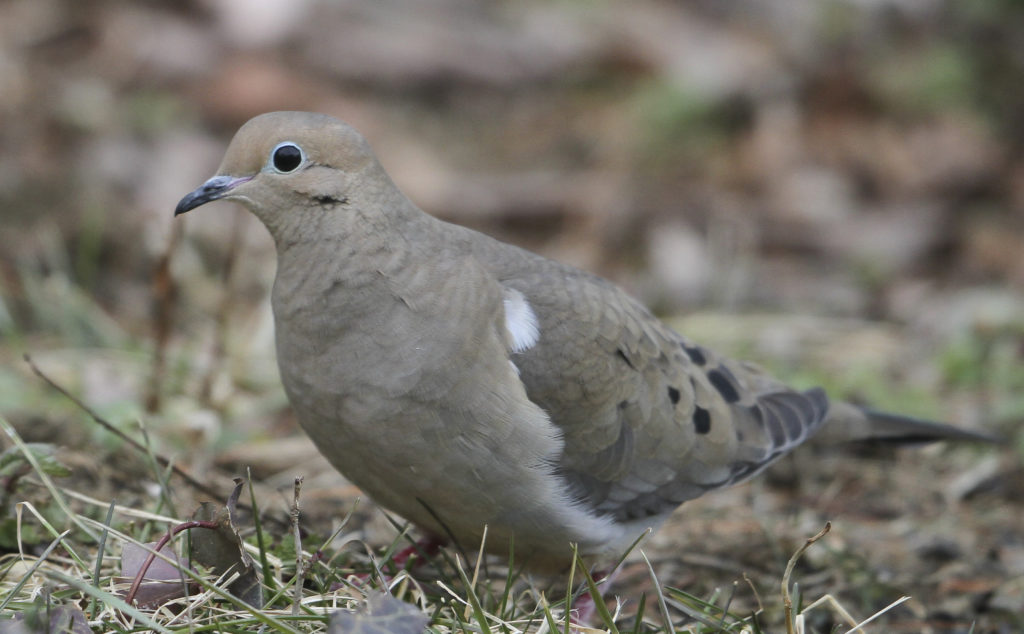Creature Feature

Whistling Wings and a Mournful Cry
By Wayne Bierbaum
As I walk out my back door, I almost always hear the whistling wings of mourning doves launching themselves into the air. These fast-flying nervous doves cannot take hold of the hanging bird feeders and instead clean up what falls on the ground.
The birds have several endearing attributes. Like many birds with large bodies and short legs, they bob their head forward rhythmically, balancing their gait. When they are standing alert on the ground, they may also suddenly bob their head forward in a way that causes their tail to suddenly tilt up. The movement is probably intended to alert possible danger nearby but they will do even when alone. When other mourning doves are present, the bobbing and tilting motions will spread through the group. If they become too nervous, they will all burst into the air at nearly the same time.
In the spring and summer, male doves start making their characteristic plaintive mourning call to rivals and females. As a kid, I learned how to whistle by blowing across the gap in my thumbs as my hands made a hollow chamber. The sound that I made sounded like the male mourning dove’s call and I could “talk” with the birds. When I was really good at making the sound, birds would fly in to see who was making the sound.
The sound is like a deep and slow Yo-He-Ho (pause and slower) Ho-Ho. Some people mistake the dove call for an owl.
I have since broken my left thumb and can no longer perform the whistle but can do it the regular way. The birds still talk back to me and occasionally fly in to confront the “rival”.
Doves are exclusively ground-feeding birds but will occasionally land on a large platform feeder. They feed entirely on seeds, using their small pointed beaks to break shells and husks. I do not purposefully feed the doves but I like that they clean up the ground under the finch feeders.
Because they are ground feeders, they are easy targets for many predators. Twice I have seen a fox rush up to a dove on the ground or leap into the air to grab an escaping dove. Cooper’s hawks have doves at the top of the list of their menu items. Of the backyard birds that I have witnessed being grabbed by a Cooper’s hawk, I would say 75 percent were mourning doves.
They are a favorite target of shotgun hunters because of their rapid flight speeds. Doves may have up to three broods a year, which helps them keep up with the predation.
Mourning doves are the most ubiquitous of the North American doves and the one most commonly found in Maryland. All dove species have whistling wings, which are loudest when they first take off. The smaller the birds are the higher-pitched the wing sound.
Common ground doves are found in sandy areas in the Southeast. They are small and have reddish-orange undersides of their wings. Inca doves live in the far Southwest and are small with a scale-like appearance to their wings. Both the white-winged dove and Eurasian collared-dove are larger than the mourning dove and can on rare occasions be found in Maryland. Both also have louder wings and voices. The latter is an imported transplant that is rapidly spreading across the U.S. Last year, I saw some Eurasian collared-doves north of San Francisco.
Learn how to make a mourning dove call at the Cornell University Ornithology site: allaboutbirds.org/guide/Mourning_Dove/overview
